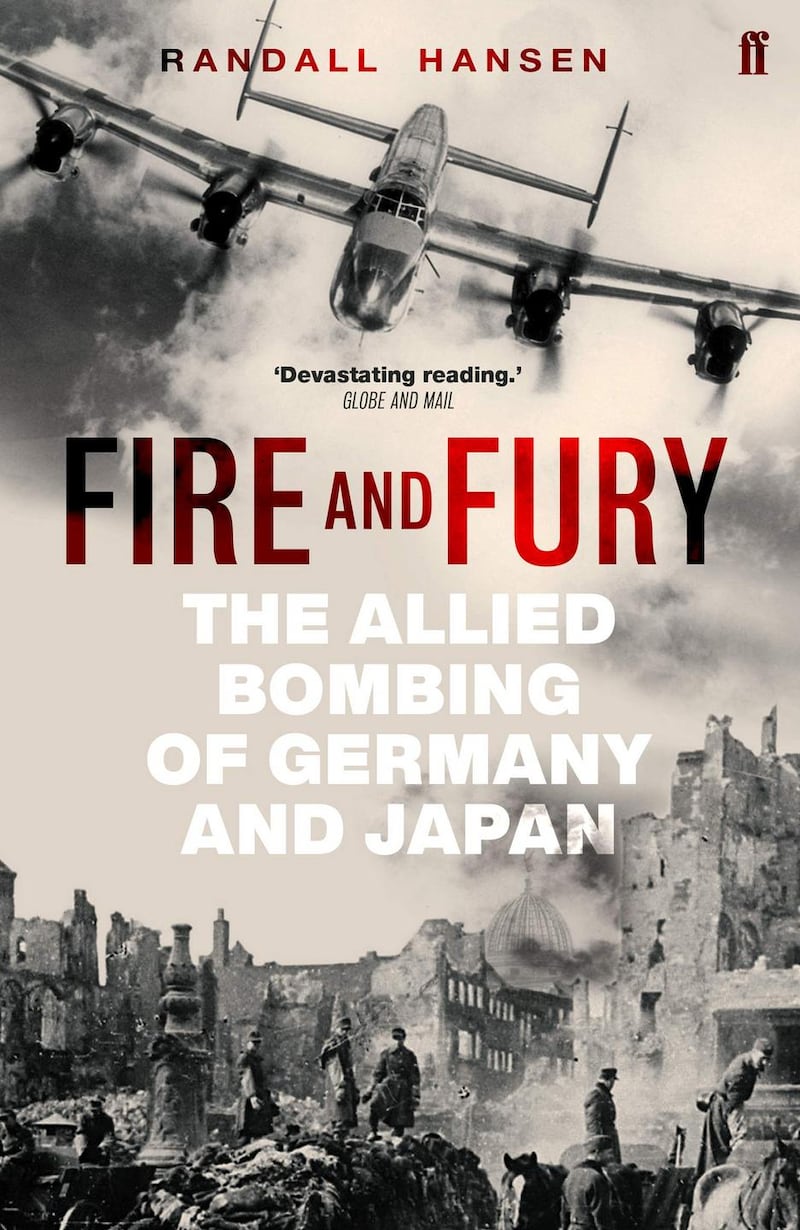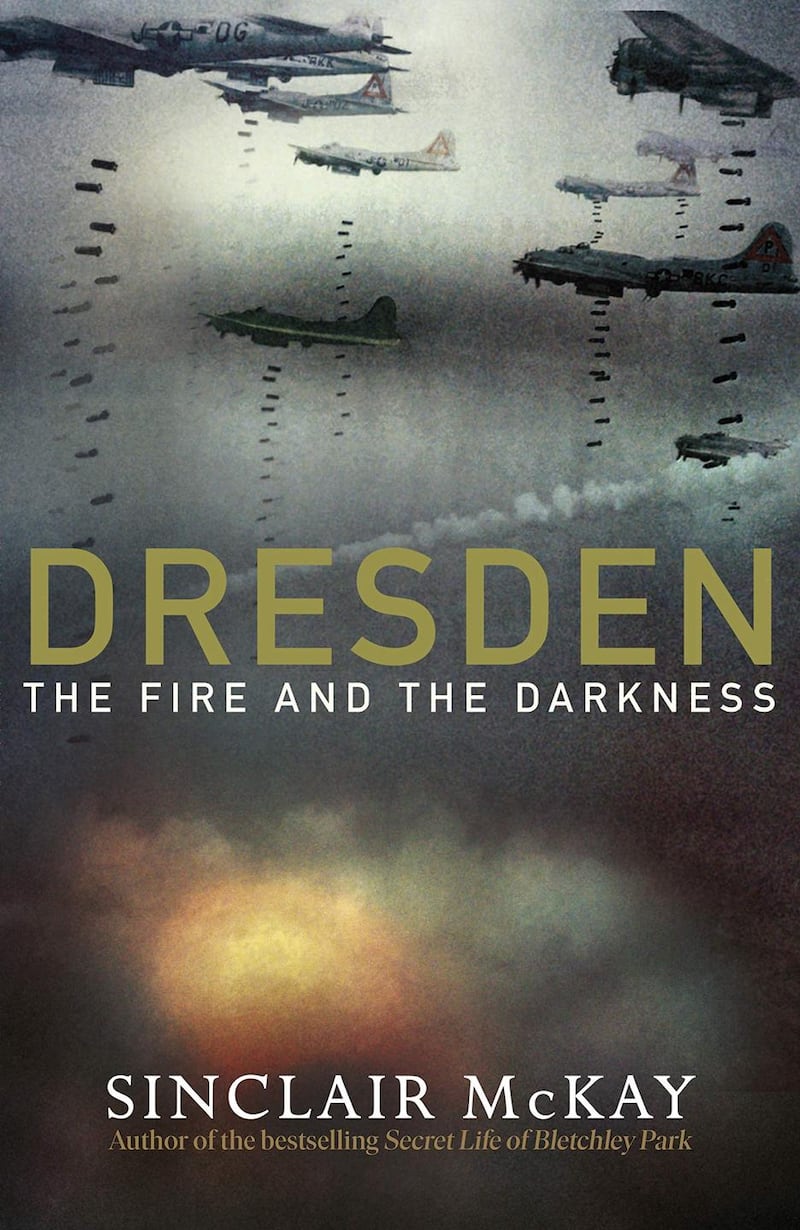Hitler saw the war he unleashed as a total struggle between peoples. He envisaged German colonists replacing “inferior” populations over vast swathes of eastern Europe. In this competition for resources the displaced would have to starve. His “hunger plan” failed, but the war killed tens of millions anyway. The Japanese treatment of civilians resulted in the deaths of over 17 million people, mostly in China.
German and Japanese civilians were not spared the logic of total war either. Some 400,000 German and 300,000 Japanese civilians died as a result of Allied bombing. Most of these fatalities occurred as a result of a deliberate policy of targeting cities.
Randall Hansen’s Fire and Fury asks if this policy was justified militarily. Did the damage and disruption to productivity and morale hasten the end of the war?
His conclusion is that the longevity of the military regimes of Germany and Japan was largely unaffected by the misery experienced by its bombed civilians.
Did aerial bombardment even save the lives of Allied soldiers?
Possibly; but even here Hansen concludes that destroying cities was less effective than the precision bombing of industry and infrastructure.
Richard Overy’s The Bombing War (2013), the heavyweight of the field, came to largely the same conclusion. Fire and Fury is a briefer and more readable book; the facts of the conflict (tonnage dropped, where and when) are combined with the stories of individual airmen and – importantly – the experiences of civilians on the ground.
Hansen is also good at portraying the wartime debate between the British ministries and Bomber Command, led by Arthur Harris, (and between the Americans and the British after 1941) on the relative merits of precision bombing against general “area bombing” of cities. The problem with precision bombing of specific industrial or infrastructural targets was that it was not very precise and its benefits were difficult to gauge.
Precision bombing meant daylight raids and an unsustainable level of losses of crew and planes, particularly in the earlier years of the war. It was also weather-dependent. Night-time area bombing of industrial cities of the Ruhr meant you were guaranteed to hit something.
That Harris overestimated the effectiveness of area bombing on the war effort relative to strategic bombing is easier to see in retrospect, and Hansen is careful to provide perspective on Harris’s thinking. The bombing of civilians was never intended as retribution. Harris was, like most commanders in the second World War, of the generation that had seen the first World War. He had been a pilot in the Royal Flying Corps.

Slaughter
Hansen writes: “As he and his colleagues in No 45 Squadron flew above the Battle of Passchendael they witnessed an appalling slaughter that eventually resulted in 250,000 casualties and cost the lives of 100,000 British and imperial troops. He concluded that it was worth bearing, or inflicting, any price to avoid a repetition of that horror.”
A front-line soldier had been a civilian the day before. What was the difference then, morally and practically, between bombarding him while he crouched in a mud-filled trench and bombing him in the factory where the weapons were made? Or opening a front in the skies and forcing the enemy to divert resources and manpower to air defence?
The British under Harris would largely focus on area bombing for the course of the war, and the American Eighth Air Force under Ira Eaker would concentrate on precision bombing.
As the war progressed constraints on the bombing of civilians gradually fell away. The July 1943 attack on Hamburg incinerated a large part of the city, killing 35,000 and causing up to a million to flee.
The Hamburg firestorm was considered a spectacular success. The raid had employed a new technique: “The first wave of planes dropped the high explosives that tore off the roofs of the houses and public buildings. The second wave followed with incendiaries, which set the houses’ contents and interior walls on fire. Fires spread from one building to another, and the neighbourhood was soon a conflagration. With any luck the high explosives would also break underground waterlines, making it impossible to fight the fires.”
The deliberate killing of civilians was never the British government’s publicly proclaimed policy. Officially the German war economy was being struck. In October 1943, Harris demanded in a letter to the air ministry that the government stop treating area bombing as a dirty secret and publicly proclaim its importance and aim:
“That aim is the destruction of German cities; the killing of German workers; and the disruption of civilized life throughout Germany. It should be emphasised that the destruction of houses, public utilities, transport, and lives; the creation of a refugee problem on an unprecedented scale; and the breakdown of morale at home and at the battle fronts by fear of extended and intensified bombing are accepted and intended aims of our bombing policy. They are not by-products of our attempts to hit factories.”
The politicians continued to dissimulate. Meanwhile, Harris was given a free hand to destroy every major German city. The Americans too had come round to supporting area bombing by 1945 in frustration with an enemy that was defeated but insisted on fighting on, and with another war awaiting completion in the Pacific.
Different stories
Sinclair McKay’s Dresden – The Fire and the Silence is a rather different history to Hansen’s. In a series of textured, layered early chapters that read like individual essays, McKay resurrects the history of one of Europe’s greatest cities and tells of the night it was destroyed.

In his 1969 novel Slaughterhouse-Five, Kurt Vonnegut described his experience as a POW during the Dresden bombardment and emerging from a cellar to see the city flattened. Another witness was the German-Jewish diarist Victor Klemperer. McKay’s Dresden gives both men ample space, and weaves together the experiences of a number of less well-known residents into the narrative.
McKay is elegiac without lapsing into sentimentalism. Dresden, famous as a centre of artistic innovation, was chosen by the Nazis for their first condemnatory exhibition of modern “degenerate” art. Its high culture and cosmopolitanism did not save its Jews from extermination. The greatness of a humanistic pan-European culture did not save it from Allied bombs.
Towards the end of 1944, Harris had boasted that Bomber Command had destroyed “45 of the leading 60 German cities”. When Dresden’s turn came, in February 1945, the Luftwaffe had been largely defeated and the now-unimpeded bombers were able to rain unprecedented destruction on their remaining targets.
The machinery of war had developed its own unstoppable dynamic, and the citizens of Dresden and Berlin – and slave workers imported from conquered lands – would pay the price for the regime’s stubborn resistance.
Much historical writing comes across as the forced march of a research project. McKay’s Dresden reads as the fruits of a pre-existing knowledge, passion and appreciation, lovingly distilled down for the reader.
McKay’s ability to relate individual stories and characters with care and detail makes Hansen’s competence in relating the human stories of the bombing war seem cursory and journalistic in comparison. McKay weaves the personal narratives of the individual airmen and the horrors of those on the ground without sacrificing historical context or the complexity of the debate over area bombing at the time.
Researching history is one thing, writing it is another. The great historian – and stylist – Tony Judt was once asked by another great historian, Timothy Snyder, what made great history writing. Being able to tell a story, replied Judt, unequivocally.
McKay's Dresden tells the story.
Penguin will publish Philip O Ceallaigh's translation of Women by Mihail Sebastian in April; his next book, Trouble, is due out in September


















